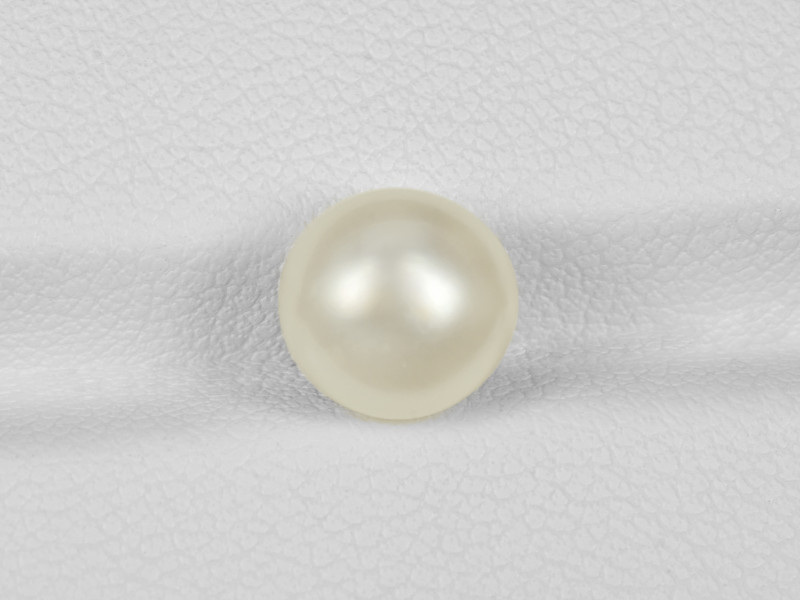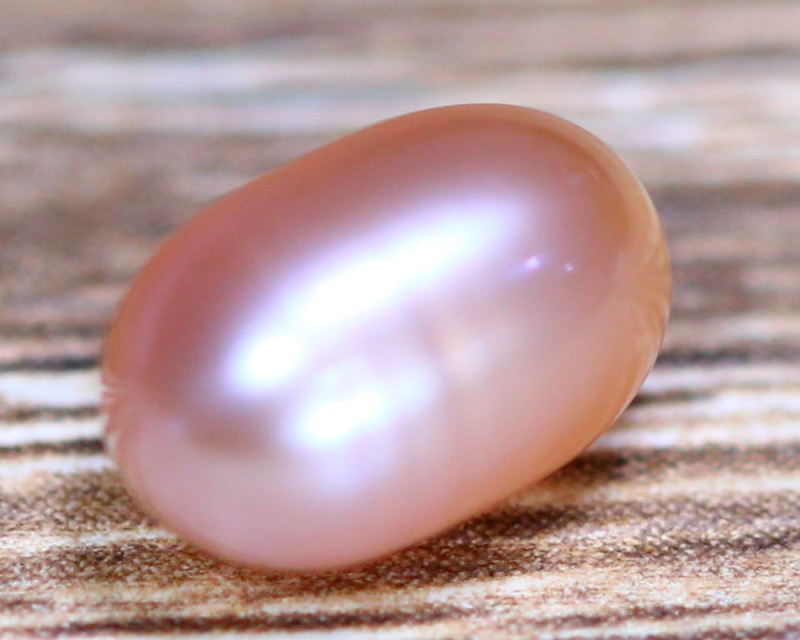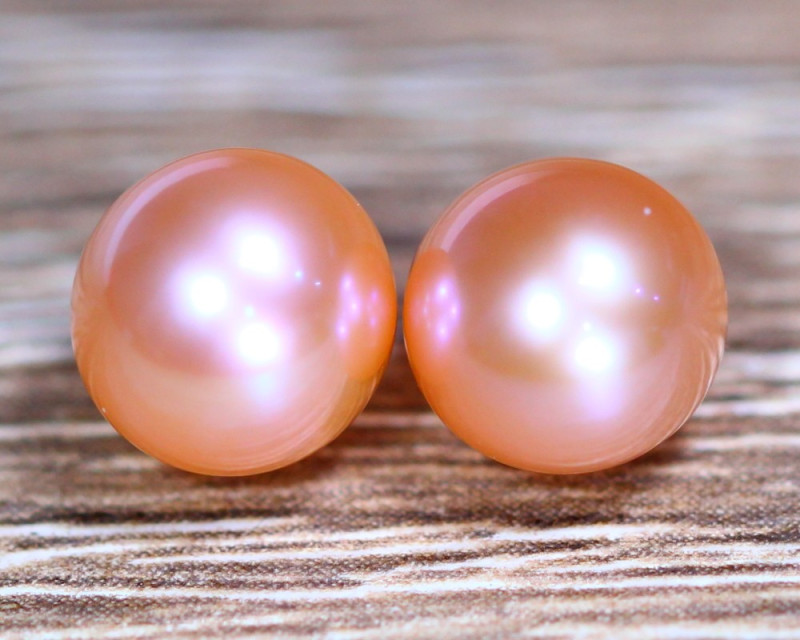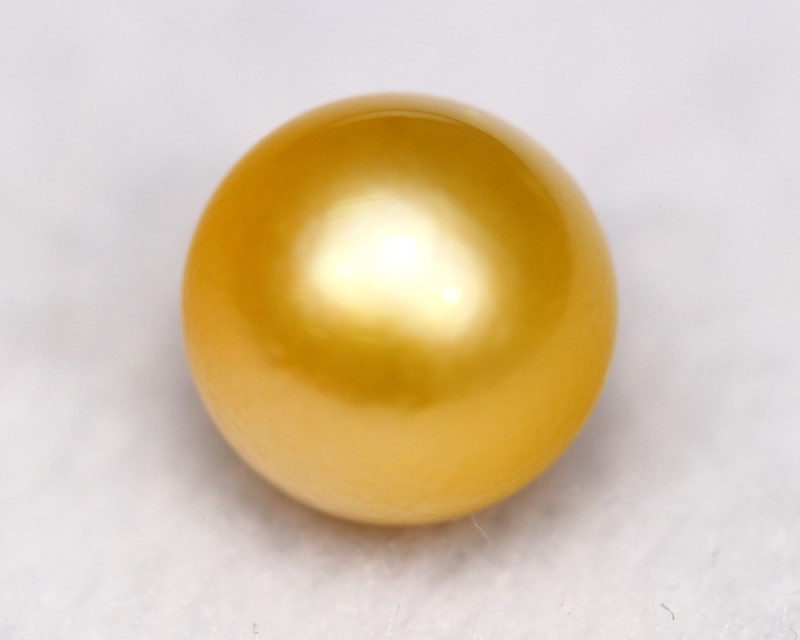
Pearl Types, Meanings, Value and Buying Properties
 If you’ve ever held a glistening pearl in your hands, you’ve held one of the water’s most unique treasures. Unlike mineral gemstones that form in the earth’s crust over millennia, pearls are organics, which means they form from natural organisms rather than mineral compounds.
If you’ve ever held a glistening pearl in your hands, you’ve held one of the water’s most unique treasures. Unlike mineral gemstones that form in the earth’s crust over millennia, pearls are organics, which means they form from natural organisms rather than mineral compounds.
A beloved trinket of modern and ancient cultures, pearls have a history as long as civilization itself. So, what are pearls, how are they formed, and what can you expect to learn about them today?
Pearls are natural or grown organic gemstones that form inside the soft tissue of a mollusk like a clam or a mussel. These gems can grow in either freshwater or saltwater. Today, most pearls in the market are cultivated in farms, and it’s rare to find a natural pearl.
Keep reading as we outline the meanings, uses, properties, and value of pearl gemstones. First, let’s address precisely how both natural and cultivated pearls form in the water.

About Pearls and How They Grow
Did you know that pearls are one of the only gemstones that come from a living creature? Pretty neat, right? Pearls aren’t the most durable gem in the market, but they certainly are one of the most enduring. Over time, pearls only grow in popularity yet remain a classic.
There are many types of pearls, from baroque to Akoya, South Sea to Tahitian, and freshwater to salt. The rarest is the conch pearl.
Pearls are the original June birthstone and the anniversary gift for those celebrating their 30th year of marriage. On the zodiac birthstones chart, pearl falls on the sign of Gemini and resides under Mercury.
What is a pearl made of?
Pearls are composed of calcium carbonate (aragonite, calcite, or a mixture of both) with an orthorhombic crystal system, a composition of three unequal right-angle axes.
If they’re organic, why is pearl a gemstone? Well, not all gemstones are minerals formed geologically. Gemstones can also form organically through biological processes, and the resulting organic gemstones may not be minerals at all, but rather mineraloids. Some other organic gemstones include coral and amber.
How are pearls formed?
The pearl formation process is a phenomenon only mother nature could produce. Pearls may look like a treasure, but they formed from something as humble as a grain of sand or floating bacteria that gets trapped inside a mollusk’s shell. What is pearl made of?
Inside the shell, the creature secretes a soft nacre, the same material used to compose the organism’s shell. The creature secretes this to build a protective shield around the irritant. Over time, the layers of nacre harden to form a glistening pearl!
Because of their radiant beauty and pearlescent sheen, pearls are popular gemstones for necklaces, earrings, and even special occasion rings.
What is the hardness of a pearl?
You might wonder, are pearls soft stones? Unfortunately, yes. Unlike harder gems like diamonds and sapphires, pearls have relatively low durability, ranking between 2.5-4.5 out of 10 on the Mohs Hardness Scale.
But don’t let that deter you from buying pearls! Despite their soft composition, pearls make for beautiful jewelry, and when cleaned and maintained regularly, they’ll shimmer for a lifetime and more.
We’ve mentioned some key physical characteristics of pearls, but what more do we need to learn about pearl composition?

Pearl Specifications and Characteristics
Pearl stones come in many shapes, sizes, and colors, and these features relate to the gemstone’s chemical compounds. Let’s take a closer look.
Color: White, Gray, Black, Blue, Green, Orange, Yellow, Brown, Purple, Pink, Multi-colored
Crystal structure: Amorphous (undefined)
Luster: Pearly/Pearlescent
Transparency: Opaque
Refractive index: 1.52-1.69
Double refraction: 0.156
Cleavage: None
Mineral Class: Calcium carbonate/organic
Types of Pearls
There are hundreds of pearl varieties, but we’ll share some of the most popular types of pearls below. Remember that natural pearls are exceedingly rare and highly valuable. Most pearls are cultured. Otherwise, there would be hardly any in the market. Here are some pearl types you’ll come across in the gemstone market.
Freshwater Pearls

These pearls form in freshwater like rivers, lakes, and ponds. China is the leading supplier of freshwater pearls, and they come in various shapes, sizes, and colors but most commonly resemble the Akoya Pearl. Freshwater pearls have a thicker nacre because the nucleus is thin tissue grown in freshwater.
Saltwater Pearl

Saline ocean waters produce saltwater pearls in mollusks like oysters. The most common varieties of saltwater pearls are Akoya pearls, South Sea pearls, Tahitian pearls, and blue pearls.
Cultured Pearl

Rather than forming naturally, cultured pearls grow from human cultivation by inserting a nucleus material into an oyster or mussel. Once the material is planted, the host mollusk goes to work, forming the layers of nacre to produce a pearl as it would if an irritant had naturally drifted into the shell. The main types of cultured pearls are Akoya, freshwater, South Sea (white and golden), Sea of Cortez, and Tahitian.
Natural Pearl

When an irritant naturally enters a mollusk, the host creature secretes calcium carbonate layers around it to protect itself. Natural pearls rarely occur and without any human aid, making them expensive and hard to find. Most natural pearls from the Persian Gulf have been harvested, depleting the resource. However, even before this, only 1 in 10,000 wild oysters produce pearls, and at that, they are rarely of gem-quality size and shape.
Abalone Pearl

A horn-shaped, striking pearl grown in a mollusk called haliotis, abalone pearls have a stunning blue iridescence most popularly seen in blue pearls.
Akoya Pearl

Akoya pearls come from cultured Akoya oysters that are bead-nucleated, meaning pearl farmers insert a bead for the oyster to secrete nacre around to form a pearl. Akoya pearls are trendy and come from China, Japan, Australia, Vietnam, and South Korea.
South Sea Pearl

In the Pacific and Indian Ocean waters of The Philippines, Australia, Myanmar, and Indonesia, a stunning, large pearl variety forms. The average sizes of these white, cream, or golden pearls range from 9-20mm. We can thank the Pinctada maxima mollusk for producing such highly regarded and famous pearls.
Tahitian Pearl (Black Pearl)

Dotting the waters of the French Polynesian islands, Tahitian pearls are popular, large pearls ranging in size from 8-15mm. Tahitian pearls don’t exclusively come from Tahiti, though; they’re sourced all around the islands in the South Pacific. These beauties come in various colors, including blue, green, grey, black, and purple, although they’re called “black pearls” because they form inside the black lip oyster or Pinctada margaritifera.
However, any pearl dark in color is also referred to as a black pearl, even if its origin isn’t French Polynesia.
Melo Pearl

These rare pearls come from Southeast Asia and grow inside Melo Melo, a marine snail. Because they don’t grow within mollusks, they aren’t officially pearls. However, they grow in the same conditions that pearls do, earning a spot on the list!
There are hundreds of other pearl varieties, but let’s switch things up and dive into the various pearl meanings and significance.
Pearl Meaning and History
The term pearl comes from the Latin word Perna, and the Old French term, Perle, both of which mean “leg,” shortened from the “leg of a mutton shaped bivalve.” Huh? Let’s break it down. Mutton is the flesh of a sheep shaped like a bivalve or aquatic mollusk. Pearl is the term shortened from “Mother of Pearl,” the mother being the host creature that the pearl forms within.
Beyond pearl meaning and origins, we use the term pearl to describe a lustrous shape or sheen. What is special about a pearl? Let’s look at pearl’s vibrant history and legends to answer that!

Symbolism and Mythology
It’s no surprise that pearls are one of the oldest and most treasured gems, giving them a cultured history as dynamic as their growth processes. Because of their ethereal, dreamy appearance, pearls have represented the moon, water, and femininity across global symbolism and folklore.
Because pearls are born in the water, and the moon controls the ocean’s tides and currents, there is a strong association between pearls and lunar symbolism.
Pearl has long been thought of as the Moon’s daughter. Strengthening this connection is the representation of the moon as a symbol of femininity and feminine energy. But where do pearls and their mythology come from?
Pearl meaning first comes from Vedic texts which say that the earth’s waters and divine energy conceived the pearl and fertilized it with a lightning bolt.
Because of their liquid shape and movement, pearls represent water. In mythology, white pearls are thought to be gods’ tears. In biblical folklore, one tale says that Eve’s tears after being banished from the garden of Eden turned into glistening pearls.
A further stretched association is the depiction of pearl as a conduit for wealth. This legend comes from the ancient practice of casting spells to summon wealth. The ritual involved selecting a fine-quality pearl and throwing it into the garbage. Yikes! But the tradition wasn’t for naught. The concept was that if one was wealthy enough to dispose of a striking pearl, they must be wealthy enough to lose such a treasure.
Today, we don’t toss aside fine pearls. Instead, we wear them to soak up their holistic properties. But more on that later.
Beyond wealth, we refer to sage advice as “pearls of wisdom” thus associating pearls with intelligence and forethought to siphon knowledge.

Pearl Spiritual and Healing Properties
What do pearls do spiritually? Many crystal healing practitioners use pearls for reproductive and fertility uses.
Pearls are said to assist with fertility and help with a more comfortable birthing experience. Because of their feminine moon energy, pearls can restore the balance of hormones and the body's equilibrium. If you’re wondering what chakra is pearl associated with, you can use pearls to energize the Anahata or Heart chakra.
The heart chakra is the center of empathy and love, so wearing pearls can help to ease emotional wounds or help you forgive after a traumatic event.
Physically, pearls can help ease the digestive tract by lowering acidity and neutralizing bloating and acid reflux. Additionally, pearls may help to strengthen the muscular system.
Remember how pearls are associated with celestial powers and intuition? Well, healing with pearls can strengthen the connection to higher realms and help to restore faith.
Are you ready to buy pearls and grab some of that nourishing moon energy? Fabulous! Before you shop, let’s go over the important gemstone properties that influence pearl value and prices.

Pearl Gemstone Properties
Thanks to cultured pearls, there really are hundreds of different sizes, shapes, and styles to choose from. Additionally, pearl grading follows its own set of criteria.
Size and Shape
Larger-sized pearls are traditionally more expensive. However, size isn’t the only indicator of value. Different types of pearls go in and out of fashion, and what’s trending can influence prices, too.
Symmetrical pearls that are perfectly rounded are the most highly-regarded and sought-after. As such, these beauties are listed at premium price points. A more economical alternative is oval and off-round shapes, which look similar to symmetrical pearls without the steep prices.
The least expensive are baroque shapes, but their offbeat shapes are trending, so snap them up quickly before prices skyrocket!
Color
There’s a pearl color for everyone out there, from timeless white pearls to modern green and black variations. The most popular and prestigious pearls are white, but the great thing about this palette is that they can be treated to match any color. Far more important than color is iridescence. Gem-quality pearls should have a pearly sheen that radiates soft hues of pinks, greens, blues, and whites.

Luster
High luster is typical among the most striking pearls. This means that the pearl shouldn’t be dull but have a shining pearlescence.
Treatments
Most cultured pearls receive treatments, so it’s essential to understand the different processes that affect pearl value and longevity. The treatment will depend on the type of pearl you’re buying. For instance, freshwater pearls like Akoyas are typically bleached in sunlight or hydrogen peroxide. Other pearls will be dyed to turn them black or any color other than white.
Another pearl treatment used to darken pearls is irradiation. Applying radiation helps to enhance the pearl’s iridescence and sheen. Keep in mind that irradiation reduces prices and value. To improve luster, pearls receive heat treatments.
Coating pearls is a frowned-upon practice because it damages the pearl and diminishes the luster. When buying pearls, be sure to ask your jeweler what types of treatments the pearl has undergone to ensure it won’t damage your pearl long-term.
What About Imitation Pearls?
There are synthetic imitations of every gem in the gemstone market, and pearls are no different. Glass beads can be manipulated into looking like pearls, but they are far too smooth. Genuine pearls have a scaly texture and grittiness, making imitation pearls easy to detect.

Pearl Origins and Sources
We mentioned that most pearls are cultivated in pearl farms, but where do they come from? There are several pearl sources, including:
Saltwater Pearls
The Indian and South Pacific oceans
Cultured Pearls
China
Japan
Indonesia
Myanmar
Australia
The Philippines
French Polynesia (Primarily Tahiti)
Freshwater Pearls
China
Japan
United States
Pearl Care and Maintenance
Pearls are naturally porous organic gemstones with a soft composition, making them prone to tarnishing and damage. Here’s how you can ensure your pearls go the distance and sparkle in the light forever:
Wait until you put on your makeup and perfume to put on your pearls to avoid chemicals and powders that might settle into the pearl.
After you wear your pearl jewelry, wipe them down with a damp, soft cloth to clean them of oils, perfumes, or environmental debris.
Wash pearls with detergent-free, warm soapy water to clean away buildup and grime. Lay them out on a soft cloth away from your sink to dry.
Take care not to bump your pearls into harder surfaces like counters, diamonds, or other hard jewelry.
Store pearls in an air-tight jewelry box that’s free of moisture and humidity that can dehydrate your pearls.
Never wear your pearls while cleaning, bleaching, or doing laundry, as the dyes and chemicals in commercial cleaners and vinegar can damage your precious pearls.
Before we wrap up, let’s chat about pearl prices so you’ll know what you can expect to pay for your pearls.

Pearl Prices and Value
When we discussed pearl properties, we shared that features like luster, size, color, and origin influence pearl prices. Here’s a breakdown of average costs for the most common types of pearls available for purchase.
White Freshwater Pearl Matching Pairs
6-11 mm top luster pearls: $100-500 USD
6-11 mm high luster pearls: $60-380 USD
White Akoya Single Pearls
6-9.5 mm top luster pearls: $110-4,500 USD
6-9.5 mm high luster pearls: $90-2,250 USD
Tahitian Black Single Pearls
8-13 mm top luster pearls: $270-1,500 USD
8-13 high luster pearls: $270-900 USD
South Sea Single Pearls
8-14 top luster white pearls: $450-8,100 USD
8-14 high golden pearls: $315-5,400 USD

Pearls: The Perfect Accessory
Are you ready to buy pearls online? Now that you know all of the unique features of these beautiful treasures, you can put your knowledge into action when shopping for pearls. Pearls are a beloved accessory that has adorned the necks of royalty, nobility, and socialites for centuries.
Whether you flaunt elegant pearl strands or love the earthy look of loose baroque pearls, they’re sure to add a touch of elegance that’ll always be in style, and who can resist that?
Search the Gemstone Encyclopedia
Related Auctions
Related Articles
Azotic treatment of Topaz and Quartz is a treatment that creates a layer of color over a gemstone. Learn more about this treatment and check out our stones fro sale.
8th May 2018
Quartz and Topaz are two of the most common minerals on the planet. They also look very similar. Let's look at some properties of them and compare Quartz and Topaz.
23rd Oct 2018
Gemstones and crystals are capable of absorbing and conveying energy, that’s why it’s important to cleanse, re-charge and program your stones so that they may achieve their best potential.
9th May 2018
Latest Articles
Yugawaralite is a rare colorless, white, or pinkish zeolite crystal named for its discovery in Yugawara, Japan. Here we uncover the multifaceted history, properties, prices, and uses of yugawaralite.
24th Mar 2025
Simpsonite is a lesser-known mineral known on the gem market for its durability, yellow-orange color, and rarity. Discover all the properties, uses, prices, and history of simpsonite.
3rd Mar 2025
Kurnakovite is a colorless crystal related to inderite and rarely faceted but known among collectors. Explore the mineral traits, history, prices, and more in this kurnakovite guide.
17th Feb 2025
Article Categories
How To's is where you will find helpful articles from gem Rock Auctions on how to cut gemstones, select gemstones and buy gemstones.
9 Articles





